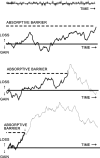Current concepts and an alternative perspective on periodontal disease
- PMID: 32847557
- PMCID: PMC7448340
- DOI: 10.1186/s12903-020-01221-4
Current concepts and an alternative perspective on periodontal disease
Abstract
Background: Epidemiological data from countries worldwide show a consistent pattern implying that a fraction of around 10% of those over 40-50 years in all populations will exhibit severe periodontitis with the potential risk of losing teeth during their life-time. The subgingival microbiota shows striking similarities between populations irrespective of disease severity and can only marginally explain the clinical pattern. It is also difficult to explain this pattern by genetic and acquired risk factors such as systemic disease (e.g. diabetes) or habits (e.g. smoking) even if they may have a confounding effect on the disease.
Main text: Inflammation of the gingiva appears to be a normal and physiological response to the presence of commensal bacteria along the gingival crevice and in the dental biofilm. Over many years of exposure to the dental biofilm, the chronic inflammation in the gingiva gradually results in a loss of attachment and bone loss. Numerous laboratory and clinical studies have provided insight into the potential role of determinants that are associated with periodontitis. However, it has been difficult to relate the findings to the pattern of the distribution of the disease observed in epidemiological studies. We propose a simple and parsimonious model that considers all the multitude of potential determinants as creating effectively random noise within the dental biofilm to which the tissues react by accumulating the effects of this noise.
Conclusions: We suggest that such a model can explain many of the epidemiological features of periodontal breakdown over time, and we discuss its clinical implications.
Keywords: Epidemiology; Host-pathogen response; Inflammation; Oral microbiome; Periodontitis.
Conflict of interest statement
Each of us is an independent researcher with no conflicts of interest.
Figures


References
-
- Baelum V, Lopez R. Periodontal disease epidemiology - learned and unlearned? Periodontology 2000. 2013;62(1):37–58. - PubMed
-
- Loe H, Theilade E, Jensen SB. Experimental gingivitis in man. J Periodontol. 1965;36:177–187. - PubMed
-
- Loesche WJ. Clinical and microbiological aspects of chemotherapeutic agents used according to the specific plaque hypothesis. J Dent Res. 1979;58(12):2404–2412. - PubMed
-
- Loesche WJ. The therapeutic use of antimicrobial agents in patients with periodontal disease. Scand J Infect Dis Suppl. 1985;46:106–114. - PubMed
Publication types
MeSH terms
LinkOut - more resources
Full Text Sources

